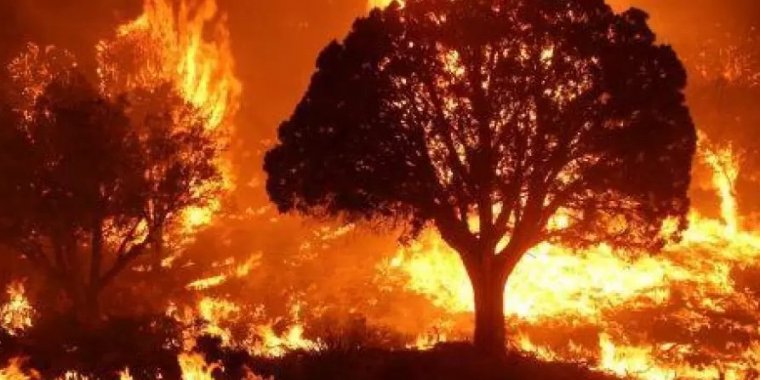| News / World News |
Dry lightning can spark wildfires even under wetter conditions
Dry lightning can still be disastrous even when conditions aren't so dry, a study has found.

Dry lightning can still be disastrous even when conditions aren't dry. Photo: Mike McMillan/USFS
These cloud-to-ground strikes during little to no rainfall were previously thought to pose wildfire danger only if occurring with less than 2.5 mm of rain in a day (about 0.10 inches).
A Washington State University-led study of lightning-ignited wildfires in the U.S. West found the strikes caused wildfires despite up to 7.7 mm (about 0.3 inches) of precipitation.
While still a low amount of rain, the more accurate estimation could help responders more effectively detect fires because it alerts them to stay vigilant for "holdovers," which can smolder for many days before exploding into full-blown wildfires.
"The rainfall amounts we quantified should help provide a better understanding of just how much rain can fall and still pose a fire risk," said Dmitri Kalashnikov, lead author of the study.
The researchers analyzed data on more than 4,600 naturally caused fires across the West compiled by the National Interagency Fire Center from 2015 to 2020. They matched 3,726 of those to the lightning strikes that likely started them using the National Lightning Detection Network data.
The study found that 15.3% of those were holdover fires, representing over a hundred fires each year. Analyzing radar precipitation data around the time of the lightning strikes showed greater rainfall than previously thought among the earlier detected fires ranging from 1.7 mm-4.6 mm (0.07 inches-0.18 inches).
Holdover fires tended to occur with even higher precipitation of about 3.0 mm-7.7 mm (0.12 inches-0.3 inches).
While humans still cause most fires either by accident or arson, lightning-caused wildfires burn the most acreage. Nearly 70% of the wildfire-burned land in the West were from lightning-sparked fires according to a previous study.
For example, the largest wildfire burn area in California history occurred in August 2020 after dry lightning ignited many wildfires at once.
Dry lightning can also start wildfires in remote places that are hard for firefighters to reach, Kalashnikov said. Holdovers pose an additional problem because they are so hard to detect in early stages.
This study found the highest proportion of holdovers were in the forested mountains of the Southwest as well as the middle and southern Rocky Mountains.
Forested areas are particularly vulnerable to these types of fires because lighting might ignite the leaves and twigs on the forest floor that is sheltered from rain — and from view — by the branches above.
"Holdovers are extra sneaky because lightning can start a fire, and it might just kind of smolder for a day or two or sometimes a week or more until conditions are right for fire to spread," Kalashnikov said.
"The lightning storm may have passed a long time ago, and you might think there's no danger, then all the sudden, the fire blows up." (U.S. National Science Foundation)
YOU MAY ALSO LIKE





